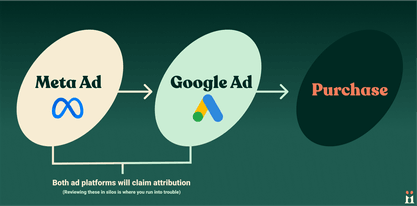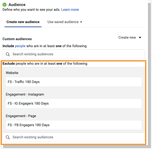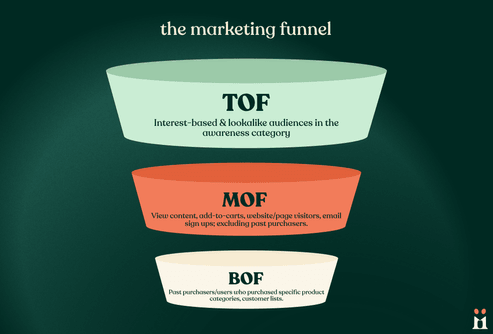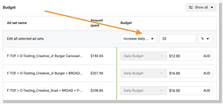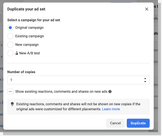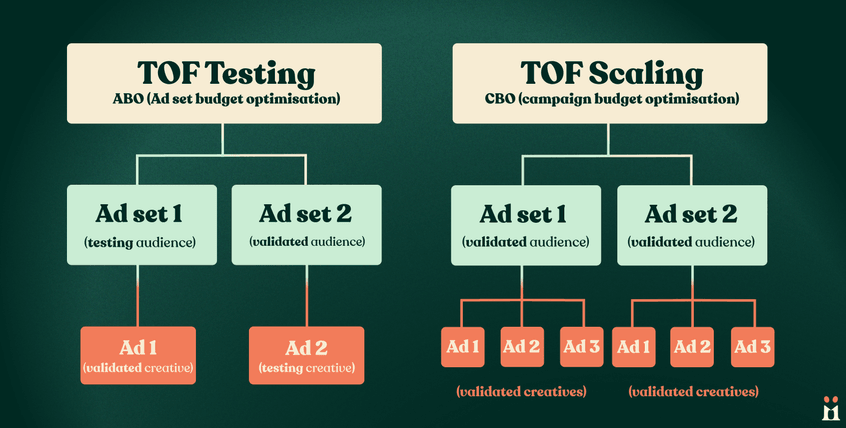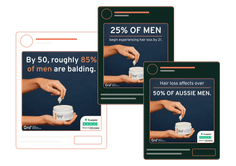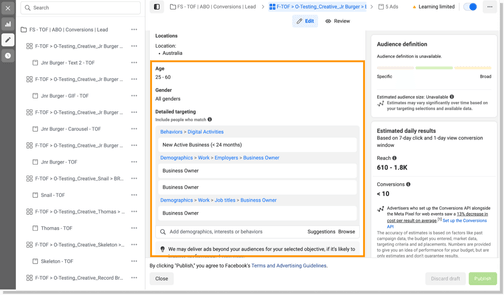
Powerful Facebook Ads Scaling Strategies for Maximum ROI
Discover key strategies for scaling your Meta (Facebook) ads, including vertical and horizontal scaling, creative testing, new ad formats, and expanded audience targeting. These techniques help brands maximise their ad campaigns and drive profitable growth.
The Importance of Scaling Your Meta Ads
Scaling your Meta Ads (formerly Facebook Ads) is crucial for increasing the impact and reach of your advertising. Scaling means growing your ad campaigns to reach a wider audience, raise ad spend, and achieve more leads, revenue, or other desired results. And who doesn’t want to do that?
Whether you want to boost purchases, increase sign-ups for a free trial, or drive more traffic, scaling can deliver quick results. Organic growth often takes months, while scaled ad campaigns can produce immediate effects.
Why Scaling Meta Ads Matters
While getting more leads and purchases is appealing, scaling your Meta Ads offers several other advantages:
Reach More Customers
Scaling lets you extend your ads’ reach to a broader audience. By expanding targeting parameters or exploring new audience segments, you can tap into untapped markets and increase brand awareness among potential customers. It’s like casting a wider net into a sea full of potential customers.
Enhance Ad Performance
As your ads scale, you gather more data on your audience’s preferences and behaviour. Spending on paid media isn’t just an expense; it’s like buying valuable data. This data helps refine ad performance and optimise campaigns. You can think of it as getting a treasure map to guide your ad strategy.
Achieve Cost Efficiency
Scaling Meta Ads can lead to more efficient budget spending. Discovering new segments with lower acquisition costs allows you to maximise your budget effectively and get more value for your money.
Gain a Competitive Edge
Scaling can give you a competitive edge by helping you dominate the advertising space in your industry or niche. Increased spending can boost your share of voice, establishing your brand as a leader. It’s like turning up the volume so your message is heard loud and clear.
Drive Business Growth
The most impactful benefit of scaling is business growth. By generating more conversions, you can increase your customer base, boost revenue, and drive growth. After all, more sales mean more success.
Strategic Approaches to Scaling
While scaling sounds great, it should be done strategically and with care. Monitor your campaigns closely to ensure increased ad spend and reach achieve your goals. It’s a bit like sailing—catch the right wind, and you’ll cruise ahead.
Regular analysis, testing, and optimisation are essential for effective scaling. Avoid relying too much on ads that should work well; focus on what is actually working. Keep your eyes on the prize!
What This Guide Covers
This guide covers several topics to help you scale your Meta Ads effectively, including:
- Key factors to consider before scaling
- Correct exclusions
- Types of scaling strategies
- Creative testing
- Duplicating ad sets
- Testing new ad formats
- Exploring new placements
- Expanding target audiences
- Key metrics to track
Mastering Your Unit Economics
For e-commerce businesses, we recommend using the Marketing Efficiency Ratio (MER) as a key metric for scaling Meta Ads. MER is your total business revenue divided by ad spend across all platforms.

How to calculate MER
For lead generation objectives, focus on customer acquisition cost (CAC). But here, we’ll concentrate on MER, which offers a clearer picture of overall marketing effectiveness.
In-platform metrics like ROAS can be misleading. When scaling, ROAS might decrease, but as long as MER is above target, you’re on track. As revenue increases, MER targets can slide down since your marketing doesn’t need to work as hard. Your marketing machine should be purring, not roaring!
Before scaling, understand your unit economics, crunch numbers, and align your MER with business goals. It’s like fine-tuning a car before a race.
Multiple ad platforms claiming attribution for only 1 purchase
Setting Correct Exclusions
Set correct exclusions before scaling to improve audience relevance, optimise budget, enhance performance, and manage ad frequency.
The exclusions section within an ad set
Refine targeting through exclusions to ensure ads reach the right people. Consider these exclusions:
Align Age Range
Keep age range exclusions consistent with other campaigns. Accidental inclusions can drain budgets. Targeting a new age range might be part of your strategy.
Use Funnel Exclusions
Exclude users who have engaged with the business before to focus on new users. Your scaling strategy might not be relevant to returning users.
Typical E-commerce Campaign Structure
- TOF (Top of Funnel): Interest-based & lookalike audiences; exclude MOF/BOF audiences.
- MOF (Middle of Funnel): View content, add-to-carts, page visitors, email sign-ups; exclude past purchasers.
- BOF (Bottom of Funnel): Past purchasers, specific product categories, customer lists.
A typical funnel structure in Meta Ads
Check Location Exclusions
Ensure no new locations are included unless that’s your goal. You don’t want to get lost on your way to success.
Two Types of Meta Ads Scaling Strategies
When it comes to scaling your campaigns across Meta (Facebook) Ads, there are two distinct strategies to consider; a vertical scaling strategy, or a horizontal scaling strategy (or both).
A vertical scaling strategy includes increasing the budget, and occasionally bids, for existing ad sets in order to expand the reach and impact of your existing campaigns. You are scaling what you already have upwards; inflating your existing campaigns with additional budget, as well as more audiences and creative tests.
A horizontal scaling strategy involves expanding the reach of your advertising by duplicating ad sets and campaigns to reach new segments, demographics and audiences. Often, horizontal scaling occurs before scaling vertically – as you are taking a formulaic approach to reach new and potentially high-converting audiences.
Vertical Scaling Strategies
Scale Meta (Facebook) Ads by Increasing Budgets
Scaling your campaigns vertically involves gradually increasing the budget dedicated to existing ad sets; enabling you to reach a larger portion of the target audience and generate more impressions, clicks, and conversions.
Your goal is to maximise the impact of already successful ad sets and boost campaign performance by reaching new segments of users that can be found within your top-performing audiences.
When it comes to scaling your campaigns vertically, there are several factors to consider initially and throughout the scaling process.
One key factor to consider is the frequency you make adjustments, and how significant your adjustments are. If you have a top-performing ad set, resisting the urge to triple spend overnight can be difficult; however, through extensive and thorough testing, we are definitely able to advise you that this is not the best way to scale.
Vertical scaling is typically implemented gradually, through incremental adjustments made over an extended period of time. This is the best way to ensure your ad sets and campaigns have enough time to adjust to new budgets and new users within your targeted segments.
A rule of thumb is to not increase the budget by more than 20% when you’re incrementally scaling ad sets and campaigns. Whilst this doesn’t always apply – such as if you’re entering a sale period or launching a new product – keeping budget adjustments to 10%-20% is effective in ensuring the campaigns and ad sets don’t have to re-enter a learning phase.
Increase your successful ad sets by no more than 20% at a time
Explore Scaling Strategies
There are two main scaling strategies for Meta Ads: vertical and horizontal.
Vertical Scaling
Vertical scaling involves increasing budgets and sometimes bids for existing ad sets to expand reach. It maximises successful ad sets and boosts campaign performance. Think of it as growing taller and standing out more.
Adjust budgets gradually, usually by 10%-20%, to avoid re-entering a learning phase.
Horizontal Scaling
Horizontal scaling duplicates ad sets to reach new segments and audiences. It involves expanding targeting and exploring new demographics or interest groups.
How to duplicate your winning ad sets in Meta (Facebook) Ads
Vertical Scaling Tactics
Increase Budgets
Gradually increase budgets for existing ad sets to reach a larger audience and generate more conversions. Slow and steady wins the race.
Duplicate Ad Sets
Duplicating ad sets creates copies of successful ones, allowing for increased budgets and reaching broader audiences without risking original performance.
Leverage CBO Campaigns
Use Campaign Budget Optimisation (CBO) to maximise top-performing creatives. CBO distributes budgets to promising ad sets based on real-time data. Let the algorithm do some of the heavy lifting!
Here’s an example of what the Meta (Facebook) ad account structure looks like:

An example of a typical scaling structure in Meta (Facebook) Ads
Horizontal Scaling Tactics
Boost Creative Testing
Creative is the biggest driver of scaling success. Increase resources for creative development and test frequently to avoid ad fatigue. Keep the creative juices flowing!
Considerations for creative testing:
- Iteration: Test new hooks, openers, and copy to engage audiences.
- Target Audience Segments: Tailor tests for different segments.
- Ad Formats and Variations: Test different formats like video, carousel, and static images.
Iterative testing we did for our client Gro

Target New Audiences
Duplicate ad sets and adjust targeting to reach new audiences, expanding reach and exposing ads to new prospects.
Experiment with New Ad Formats
Experiment with new ad formats to engage audiences differently. Use diverse messaging, optimise performance, and remain competitive by leveraging the latest trends.
Discover New Placements
Broaden reach by exploring new placements within the Meta ecosystem. Analyse performance data to prioritise effective placements and maximise ROI.
The audiences section within an ad set
Measuring Your Success
Define success metrics for scaling strategies. Track softer metrics like CPM and CTR, as well as harder metrics like ROAS, CPA, revenue, and MER.
Measure incremental lift in sales, traffic, or brand awareness to assess the impact of scaling. Compare performance to previous benchmarks to optimise future campaigns. It’s all about making data-driven decisions!

Example of how MER can slide down as the business generates more revenue.
Wrapping Up
Scaling Meta Ads is vital for expanding marketing impact. It involves reaching a wider audience, optimising performance, gaining a competitive edge, and driving growth.
Approach scaling strategically, considering unit economics, correct exclusions, and creative testing. Use key performance indicators to measure success and optimise campaigns.
Scaling is a continuous process requiring monitoring, testing, and optimisation. By implementing the right strategies and measuring success accurately, you can expand your advertising reach and achieve your objectives. Remember, the sky’s the limit!

Harry Taylor
Harry is the king of cool space facts nobody asked for and you’ll find him working across paid media platforms you never knew existed and using all remaining brain cells on creative strategy.
Like what you read?
Learn more about digital, creative and platform strategies below.
